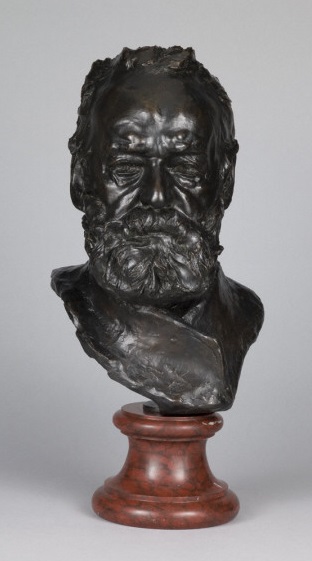Auguste Rodin, Bust of Victor Hugo, 1884

The Work
This bust is a portrait of Victor Hugo (1802-1885), the most famous writer of his generation. The author of the books Notre-Dame de Paris and Les Misérables, a poet, and a playwright, he was also involved in politics, and Rodin admired him as a true genius. This portrait is based on drawings that Rodin made in Hugo’s home, because his aging subject could not sit and pose for hours. The artist tried to evoke the visionary spirit, intelligence, and dignity of a modern hero nearing the end of his life.
Historical Moment
The Third Republic (1870-1914) was an era of peace in France. In 1884, people were looking forward to the Universal Exposition (World’s Fair) of 1889, celebrating the centennial of the beginning of the French Revolution. The public adored Victor Hugo, and when he died, one year after this bust was made, he was buried in the Pantheon in Paris, near the tombs of Voltaire and Rousseau.
The Genre
Romanticism was a movement that began near the end of the 18th century and had its strongest impact in the 19th century. The image sometimes told a familiar story from literature, and the word "romantic" derives from the word "roman" in French, meaning "novel" in English, a literary work of fiction. In romantic sculpture, artists sought to engage the viewer’s emotions with dramatic effects of facial expression and movement.
The Artist
Auguste Rodin (1840-1917) was born in Paris to a family of low social status. He was admitted to the School of Decorative Arts, and he studied sculpture with Antoine-Louis Barye. He did not have success at the beginning of his career, because his sculpture contradicted the rules of classicism by incorporating intense emotion and eroticism. Later, however, he became the most famous French sculptor in the world. He often made several versions of his sculptures in different sizes. His best-known works are The Thinker (1882) and The Kiss (1886).

